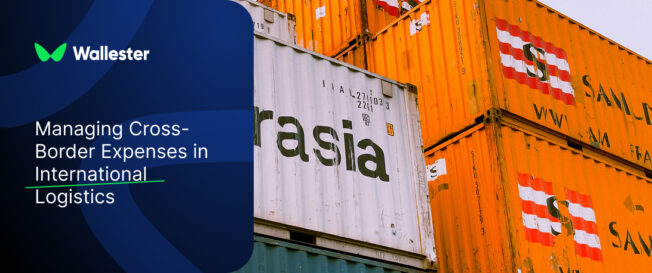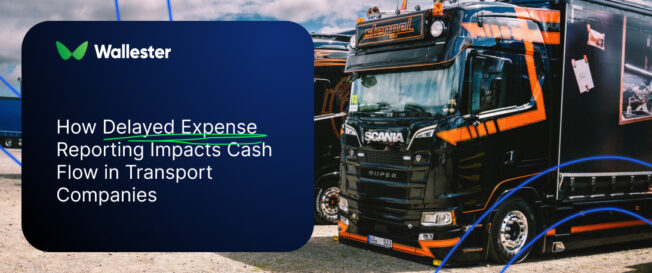Budgets are tighter, fraud pressure is higher, and finance teams want decisions on the spot rather than a tidy-up at month-end. In 2026, three clear changes stand out in corporate spending: more tokenised payments that raise approval rates and cut fraud, wider use of digital wallets at checkout and on mobile, and a bigger role for virtual cards in supplier payments and subscriptions. Visa’s 2025 data shows tokenisation lifting authorisation rates by about 4.7% and reducing e-commerce fraud by roughly one-third, which sets the tone for the year. This article explains what is driving those changes and offers a step-by-step plan to apply them in your business.
Summary
- Spend control is moving from month-end tidy-ups to real-time decisions at the point of purchase.
- Teams want clear visibility – what was paid, by whom, and why – without chasing receipts.
- Tokenised credentials and wallets raise approval rates and cut card-not-present fraud.
- Virtual cards give per-supplier and per-subscription control with clean tags for reporting.
- AI is practical now: it drafts policy text, flags anomalies, and suggests limit changes for review.
- Real-time rails add a quick route for urgent invoices and bill-pay.
- Result: cleaner reports, a faster close, and steadier cash flow across the year.
Why corporate spending control matters in 2026
Every company pays for a long list of small items that keep work moving: software seats, ads, freight, fuel, parts, travel, and local services. When these payments are visible in real time and tagged to projects or customers, leaders can spot waste quickly and direct money to the work that grows revenue. When they are not, you get late surprises, noisy audits, and a month-end scramble to explain gaps. In 2026, the bar will be higher. Buyers expect near-instant service and sellers expect prompt, reliable payment. That means card programmes, wallets, and account-to-account options need to work together without strange detours or duplicate entries.
Corporate spending market drivers and emerging trends
Costs are set to rise further while customers expect quick, safe checkout and finance teams look for calmer books at closing time. In 2026, the focus is simple: online approval rates are going to increase, routine admin between purchase and posting is going to shrink, and every payment is going to be traceable to a named owner. What follows covers the pressure points, how leaders are expected to respond inside their tools and processes, and the practical moves to use next.
Market drivers
In 2026, finance leaders are set to focus on three main priorities: getting more payments approved, removing extra admin between a purchase and the accounts, and knowing exactly who made each payment. Payment tokens are expected to help more online charges clear on the first attempt. Virtual cards named for a team or project are going to let managers set limits and expiry dates so costs stay within bounds. This shift is likely to mean fewer disputes, quicker closings, and a clearer view of spending as it happens. With more day-to-day purchases moving to budget owners, creating a supplier card in minutes and seeing the payment appear in the ledger the same day is going to be standard practice.
Economic trends
Most management teams are expected to keep a close watch on overheads, while still putting money into areas with a clear return. The focus is likely to be on steady cash flow, consistent approvals, and tools that stop hidden costs from building up. Many firms are set to try faster payment networks for urgent supplier bills or cross-border fees, while others are preparing to reshape card programmes so budgets are separated by region or project. The priority is not sweeping cost cuts but keeping spending stable and visible so planning and reporting remain reliable throughout the year.
Consumer trends
Customers are going to expect fast, low-friction checkout as standard. Wallet use is set to keep climbing because payment details are tokenised, addresses are already stored, and strong authentication works with a fingerprint or face scan. For subscriptions and renewals, tokens that stay current with a clear path to re-authenticate are expected to support revenue with fewer failed charges. None of this requires a full rebuild; staged rollouts by market or brand are likely to deliver gains without a long project plan.
Emerging trends
In 2026 new payment tools will move from trials into everyday use. AI will be part of routine finance work, drafting short policy notes, flagging unusual charges, and suggesting limit changes that managers can confirm in seconds. Tokenised payments are set to become the default for online and mobile purchases, helping more transactions succeed on the first attempt and lowering the risk from stolen data. At the same time, passkeys are expected to replace passwords, giving staff and customers quicker sign-in and fewer login issues.
Virtual cards are on track to spread widely. Companies will link a card to a supplier or project, set clear rules, and close it once the work is finished, gaining control without slowing teams down. For urgent bills, supplier transfers, or internal settlements, faster payment networks will handle tasks that previously waited for a batch run. The outcome is likely to be a mix of cards, tokens, and instant payments working alongside each other rather than one displacing the rest.
Who are the largest contributors in the corporate spending market?
In 2026 enterprises will continue to carry most carded purchases across software, media, logistics, and services, gaining the biggest benefits from tokenised online payments and routing rules that send transactions to the right acquirer. Smaller firms are set to catch up through virtual cards, which give them the same level of control as larger organisations without the cost of bespoke systems.
Sector patterns are becoming clearer: retail and direct-to-consumer businesses will push more sales online, manufacturers will rely on supplier cards to handle parts and service orders, and logistics companies will manage a constant stream of small field payments for fuel, parking, and road charges. Professional services are expected to keep combining travel, software, and client-related expenses in a way that reflects their project-based work.
What drives growth in the corporate spending market?
Three forces:
- Higher online approval rates. Network tokens reduce false declines and keep recurring payments live. Fewer churn-related tickets, fewer retries, and a steadier revenue run-rate.
- Cleaner, faster close. When cards feed the ledger daily with the right tags, finance spends less time on retyping and more time on analysis.
- Real accountability. Named cards with predictable rules cut leakage from shared credentials and petty cash. Small steps such as vendor-locked cards and per-transaction caps make out-of-policy spend rare rather than common.

Digital transformation of spending by 2026: practical forecasts
- Tokenisation carries the heaviest load
For e-commerce and in-app payments, tokenisation is the default. Europe’s progress in 2025 shows what the next months will look like elsewhere. Tokens keep credentials fresh and travel cleanly across devices, so recurring payments survive card re-issues and checkout flows speed up for returning users.
- Virtual cards become everyday tools
Card programmes that once sat with procurement now sit with budget owners. A marketing manager creates a card for a new SaaS tool with a monthly limit and a hard end date. A logistics lead issues a card for a new supplier, locked to a merchant category and capped for the first month. Finance sees both within minutes and can raise limits when spend moves to plan.
- Real-time options broaden coverage
Instant rails are used for the cases that justify them: paying a critical supplier before cut-off, clearing a bill to get a release, or moving funds across entities when a card route will not do. Companies do not rip out card programmes. They add a second tool for moments where speed saves money.
- AI moves from pilot to policy
You will see less talk of pilots and more small wins in daily work. AI suggests a rule change based on spend patterns, drafts a short note for an exception, and bumps a review to the top of a manager’s list. None of this requires a thick playbook. It needs clean tags, a habit of daily posting, and clear ownership.
Further Reading: The Complete Guide to Virtual Cards for Business
Which regions set the pace?
In 2026, Europe is expected to lead on e-commerce tokenisation, supported by network roadmaps and strong authentication rules. This will bring steadier approval for subscription renewals and fewer manual updates to stored cards.
Latin America is advancing quickly in mobile wallets and acceptance of local payment methods, giving exporters more ways to collect from customers.
South Korea continues to act as a global benchmark for fast checkout and widespread adoption of cashless payments.
In North America, faster payment networks are expanding into bill pay and B2B use cases, adding instant settlement to a wider set of participants. Regional differences remain, but the common direction is clear: smoother checkout, safer credentials, and tighter links into company accounts.
How 2026 spending will feel different inside the business
- Richer transaction data from the start: Each purchase will carry vendor, project, cost centre, and contract reference automatically, so there is no need for edits later.
- Faster insight for managers: Spending by customer or product line will be visible during the same day rather than waiting for period-end reports.
- Smoother renewal payments: Tokenised credentials will keep charges valid and passkeys will remove many of the login issues that interrupt repeat payments.
- Supplier cards as standard practice: Teams will use dedicated cards for small items and routine services, which avoids one-off approvals and delays for purchase order numbers.
- Cleaner finance records: With fewer mismatches and less manual re-entry, books will close on schedule and managers will have a reliable view of spending while it still matters.
Implementing innovative payment technologies in your business
Roll out new payment tools in layers. Keep the plan short, review progress weekly, and avoid turning it into a big project.
Step 1 – Switch on tokens and refresh stored credentials
Ask your payment partners to enable tokenisation where it is available. Update card-on-file records and use passkeys to reduce failed logins and password resets.
Step 2 – Use virtual cards for suppliers and services
Create cards for each vendor or spending category, with clear limits and expiry dates. Attach them to projects or cost centres so that transactions land in the right place automatically.
Step 3 – Add instant payments where speed matters
Reserve instant payments for specific cases such as urgent supplier bills, release payments that must be confirmed quickly, or internal transfers. Keep this targeted so cards remain the main tool, and use faster transfers only when the cost of delay is clear.
Step 4 – Build simple routines
Feed card transactions into the accounts daily. Keep receipt capture straightforward and easy to use. Have each team spend a few minutes at the end of the week reviewing exceptions.
Step 5 – Track the numbers that count
Focus on four measures: approval rate for online payments, fraud levels, the time it takes to close the books, and the share of transactions that arrive with same-day receipts. If these figures improve, the programme is delivering value.
Further Reading: How to Implement Virtual Cards in Your Company
Short lists you can use in planning
Market drivers you can act on this quarter
- Tokenise stored credentials to raise approval and cut fraud online.
- Move suppliers with variable spend to virtual cards, starting with caps and expiry dates.
- Offer wallets at checkout to cut drop-off and reduce password resets.
- Add a small set of real-time use cases. Keep it narrow and useful.
Where virtual cards help most
- Vendors with recurring or variable monthly charges.
- Trial projects that need a small spend cap and a quick kill switch.
- Teams that share a budget but need clear accountability per person.
- Agencies and partners who need a card for a single scope of work.
What to ask your payments partners
- Is network tokenisation live for my stored credentials and recurring payments?
- Can you show the approval-rate lift on tokenised vs PAN transactions?
- How do we issue and control supplier cards by vendor category?
- What’s the easiest way to test instant payments for bill pay?
Stay on top of the latest trends with Wallester
If you want your payments setup to match how companies will operate in 2026, Wallester is a strong fit. It gives you flexibility to issue virtual Visa cards instantly for teams, projects, or suppliers, while also offering physical cards when required.

Key features include:
- Instant card creation with Visa acceptance worldwide.
- Individual limits, merchant rules, and expiry dates per card.
- Multi-currency support for regional or cross-border budgets.
- Compatibility with Apple Pay, Google Pay, and Samsung Pay so drivers and field staff can pay from their phones.
- Alerts on every transaction and quick freeze or replacement if needed.
- Role-based access so managers see what they need without exposing full company finances.
- Direct integration with accounting and ERP systems through API, keeping ledgers current without extra typing.
For most businesses, the best way to start is small. Issue a handful of virtual cards for subscriptions or supplier invoices, run them for a week or two, then review the data. You can then adjust limits or categories and expand gradually. This staged approach shows results quickly and avoids disruption to daily work.
Ready to see it in action?Try Wallester with one department and watch how live transaction data, controlled budgets, and cleaner reporting can transform your expense process.


